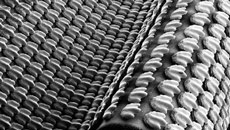Bored looking at your selfie again? Spruce it up with this new technology and you won't be disappointed.
A new algorithm developed by Massachusetts Institute of Technology researchers could transfer acclaimed photographers' signature styles to your own smart phone photos.
“Style transfer is a thriving area of graphics research but till date, standard style-transfer techniques tend not to work well with close-ups of faces,” said YiChang Shih, an MIT graduate student in electrical engineering and computer science.
Instead, Shih and his colleagues at Adobe Systems and University of Virginia performed what Shih described as a “local transfer”.
Using off-the-shelf face recognition software, they first identified a portrait in the desired style that had characteristics similar to those of the photo to be modified.
“We then find a dense correspondence - like eyes to eyes, beard to beard, skin to skin - and do this local transfer,” Shih explained.
Human faces consist of textures of different scales.
“You want the small scale - which corresponds to face pores and hairs - to be similar, but you also want the large scale to be similar - like nose, mouth, lighting,” Shih noted.
According to Shih, the technique works best when the source and target images are well matched.
When they are not, the results can be bizarre like the superimposition of wrinkles on a child's face.
The authors are set to present their findings at the premier graphics conference “Siggraph 2014” in Vancouver, Canada, in August.





